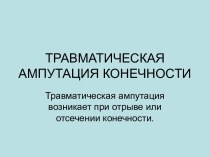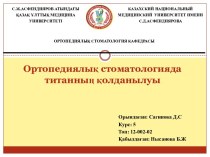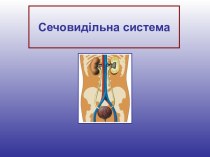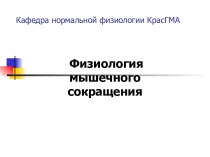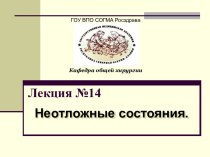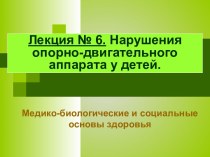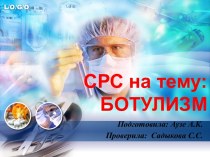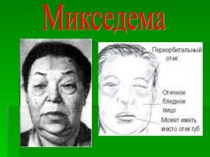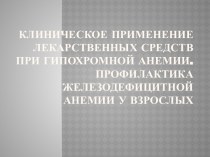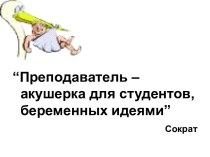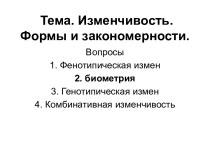- Главная
- Разное
- Бизнес и предпринимательство
- Образование
- Развлечения
- Государство
- Спорт
- Графика
- Культурология
- Еда и кулинария
- Лингвистика
- Религиоведение
- Черчение
- Физкультура
- ИЗО
- Психология
- Социология
- Английский язык
- Астрономия
- Алгебра
- Биология
- География
- Геометрия
- Детские презентации
- Информатика
- История
- Литература
- Маркетинг
- Математика
- Медицина
- Менеджмент
- Музыка
- МХК
- Немецкий язык
- ОБЖ
- Обществознание
- Окружающий мир
- Педагогика
- Русский язык
- Технология
- Физика
- Философия
- Химия
- Шаблоны, картинки для презентаций
- Экология
- Экономика
- Юриспруденция
Что такое findslide.org?
FindSlide.org - это сайт презентаций, докладов, шаблонов в формате PowerPoint.
Обратная связь
Email: Нажмите что бы посмотреть
Презентация на тему The medical aspects of psychic development and adaptive behavior in children
Содержание
- 2. The medical aspects of psychic development and adaptive behavior in children.
- 3. The persistent dynamic observation of children for
- 4. In condition of brain cortex
- 5. It is necessary to understand that the
- 6. The normal psychomotor development is defined
- 7. The approaches to the psychomotor assessment
- 8. The psychomotor development estimations in
- 9. All behavior skills (milestones) in child should
- 10. The Ukrainian pediatricians in their everyday
- 11. Estimating the gross motor skills (milestones)
- 12. The fine motor skills (milestones):- to follow
- 13. The establishment of interpersonal-to-society relationships
- 14. The language development: - to
- 15. Visual function evaluation in small childrenIn newborns
- 16. Auditory function evaluation in small childrenThe response
- 17. Denver-II-test The most accurate test system is
- 19. The obtained ones upon a time milestone then should be stored all the human life.
- 20. 6 yr aged children have to pass
- 21. Copy of “A” Human figure
- 22. The semiotics of psychomotor abnormalities in children.
- 23. Common delay of psychomotor development The backlog
- 24. The motor developmental delay The delay only
- 25. The personal-social and language developmental delayThe abnormalities
- 26. There are several easy approaches in diagnostics
- 27. There are several easy approaches in diagnostics
- 28. The modern theories about psychic development in children. Approaches to elementary psychological examination.
- 29. EgoTo understand a human person!
- 30. The phenomenon of bonding and attachment in
- 31. Between 9 and 18 mo, most
- 32. Isolated child The hospitalism is
- 33. Cognitive Theories
- 34. The childhood is a permanent cognition. The
- 35. The Piaget`s Theory of cognition. The
- 36. The stages of cognitive development
- 37. The stages of cognitive development
- 38. The stages of cognitive development
- 39. The stages of cognitive development
- 40. Moral principals development L. Kohlberg
- 41. Psychoanalytic Theories
- 42. The Freudian theory of children`s sexual development.Sigmund
- 43. Freudian pleasure principle it is a theoretic
- 44. Freud proposed five stages of psychosexual development
- 45. I. The age 0 - 18 mo. –
- 46. The Freudian genius has found the roots
- 47. The Eriksson's stages psychosocial development
- 48. 1. In early infantile period (from birth to
- 49. 5. Adolescence or teens age (12-21 years) –
- 50. Behavioral Theory
- 51. The Behavioral theory. The Behavioral theory
- 52. The adaptative learning was demonstrated in the
- 53. 4 main learning methods for creation
- 54. Probably this severe electric trouma could be avoided if child`s actions were stopped by any adult.
- 55. The punishment in childrenThe most acceptable punishment
- 56. The conditions related with learning mistakes.Often the
- 57. Child abuse syndrome The child abuse
- 58. А. Hand mark on the buttocks of
- 60. Rib fractures. Old and new fractures of
- 61. The children widely differ in their
- 62. Children widely differ in their behaviour. Albert
- 63. The children widely differ in their behavior. The role of temper.
- 64. The children widely differ in their
- 65. The behavioral features in teenagers.
- 66. The early teenagers period During the early
- 67. The average teens period The
- 68. The high risky behavior in teenagers in
- 69. Late teenagers Late teenagers develop an
- 70. Скачать презентацию
- 71. Похожие презентации






































































Слайд 3
The persistent dynamic observation of children for their
motor, psychic and behavioral development is an action directed
on achievement by the individual of the maximum social health. It is one of the most important goals in modern pediatrics.Слайд 4 In condition of brain cortex maturation
for period since infancy until preschool age (before 6
years) the psychic and behavioral child` development is enough closely connected with psychomotor development. So very often the pediatricians at this age period use the term “psychomotor development”.Слайд 5 It is necessary to understand that the normal
psychomotor development as the sequence of appearing in a
child since birth until approximately age 6 years of the motor, behavioral, emotional and speech skills (milestones) happens due to participation of intensively developing nervous system and particularly brain cortex.Слайд 6 The normal psychomotor development is defined by
making to a child the following necessary optimum conditions:
-
the child must be physically well;- presence of parents or persons capable to express toward a child true feeling of attachment ;
- a normal care, feeding and education
- safety of the most important organ feeling: a vision and a hearing.
Слайд 7 The approaches to the psychomotor assessment in
children since first months until age 6 year inclusively.
Слайд 8 The psychomotor development estimations in young
children are executed by means of out-patient child inspections
and questioning of his or her parents. This visits are managed usually in fixed dates corresponding to a date, when a child was born. Also this dates are called “epicrisial”. The visits are organizing for the first year of child life monthly, on 2-3th - quarterly, in the following - once per year.Слайд 9 All behavior skills (milestones) in child should be
group up into the following systems which must be
tested accurately:- gross (general) motor, including steady-state skills (milestones) when a child adapts to gravitation (to the earth attraction);
personal-social ("Me and society“)
language (speech shaping)
a fine motor milestones (adaptive).
Also the visual and hearing sensation must be tested.
Слайд 10 The Ukrainian pediatricians in their everyday clinical
practice use the simplified models of motor and psychic
age dependant milestones achievement in their average estimations.Слайд 11 Estimating the gross motor skills (milestones) the
following standard sequence of tests is using : "when
did the child begin?..’’to keep a head up (set-head steady). The normal answer is "at age 2 months” (50-th percentile);
to get sitting (at 6 mo);
to stand up alone (at 10 mo);
- to walk well (at age 1 year).
Слайд 12
The fine motor skills (milestones):
- to follow up
the objects by eyes (The visual concentration appears at
age 1,5 months);- to turn over in bed the child begins at 4 months;
- to manipulate with toys (rattles) at 6 mo;
- to rise on stair a child begins since 1,5 years approximately.
Слайд 13
The establishment of interpersonal-to-society relationships
- to smile
spontaneously at age 1 month;
- to smile contacting with
mother at age 3 mo;- to be scared with strangers (including a medical stuff) at 7 mo.
Слайд 14
The language development:
- to talk "ooo/aah” –
the dove (pigeon) sounds vocalization since the age 1
mo;- to prattle (“soueals” words) at age 6 mo;
- to pronounce a first intelligent words (“dana/mama”) at 1 yr.
- to speech a first simple sentences at 2 yr.
Слайд 15
Visual function evaluation in small children
In newborns the
visual function is defined on the basis of common
reaction on light.The light exposition in a sleeping child makes his eyes more closed. In a small baby with opened eyes the sudden light provokes blinking and avoiding reaction.
The children older 2 months of age can follow the flashlight by eyes if it is situated on distance of 30 cm.
Слайд 16
Auditory function evaluation in small children
The response to
the loud sound can be seen as the sudden
horizontal twitching of eyes (so called horizontal nistagmus), and coordinated pupil`s narrowing followed by their expansion.Children older 2 months demonstrate the response to palms pat on distance of 30-40 cm from the head with blinking or eyes close.
Since 3 months of age children begin to turn the head towards the sound of toy which they do not see.
Слайд 17
Denver-II-test
The most accurate test system is presented
in worldwide used Denver-II-test. The Test is
given in a manner of table, where on horizontal axis is noted an age sequence in dais, months and years (until 6). On vertical axis the list of child behavioral acts from the most primitive until more complexes (on above presented system) is brought in sequence: gross motor, language, fine motor - adaptiveand personal – social.
Слайд 20 6 yr aged children have to pass developmental
test on school maturity
The test is executed by school
teachers or school psychologists and detects an intellectual level (IQ), a level of hand (manual) abilities to write and to draw, to copy etc. As a practice the examiners ask a child to draw liberally a figure of person which must have schematically all 6 main human components (head, hands, legs etc).
Слайд 23
Common delay of psychomotor development
The backlog (retardation)
on shaping of all 4 components following gross and
fine motor, personal-social and language milestones characterizes the common delay of psychomotor development. It happens in young children with severe innate or hereditary CNS diseases or gained after ischemic-hypoxic injury of brain in labor.
Слайд 24
The motor developmental delay
The delay only in
motor development is specific for spinal motor neurons damage
like Werdnig-Goffmann disease or motor brain cortical neurons like cerebral palsy.
Слайд 25
The personal-social and language developmental delay
The abnormalities of
personal-social and language development are accompanied with communicative abnormalities
or pathology of interpersonal contacts establishment. They are typical off innate deafness, blindness, autism. Affected children avoid any dill with children and adults. The feeble-mindedness (olygophreny) also leads to communicative problems.Слайд 26 There are several easy approaches in diagnostics of
the abnormalities in sphere of interpersonal contacts in childhood. In
infants aged 1-12 mo very alarm symptoms are the following:- a child aged before 6 mo does not scare, blink or change immediately its activities in response to sudden loud sound;
- a child aged before 6 mo is not interesting by human speech, does not quiet down in response to mother voice;
- a child aged before 6 mo. does not pronounce “ooo/aah” and prattle;
- a child aged before 10 mo. does not react on his or her name;
- a child aged before 12 mo. pronounces only sounds which are limited only by wail, moan or long vowels.
Слайд 27 There are several easy approaches in diagnostics of
the abnormalities in sphere of interpersonal contacts in childhood.
In infants aged 1 -3 yr the attention must attract the following symptoms:- If the child aged before 18 mo (1,5 yr.) does not use as minimum as 6 comprehensible words.
- If at age 24 mo. a child does not use two – three words sentences like: "That is this?", "No need!" etc..
- If the parents do understand only half from that their 2 year old child speaks.
- If the 3 yr old child speech is not understandable for people excluding the parents.
Слайд 28
The modern theories about psychic development in
children. Approaches to elementary psychological examination.
Слайд 30 The phenomenon of bonding and attachment in young
children.
The process of normal social
development can not be understood without this important psychic phenomenon appearing in families of early young children. The bonding (Tie) usually appears immediately after birth and reflects the positive feeling of the parents toward the newborn. This fillings are unidirectional.
The attachment involves reciprocal feelings between parents and infant and develops gradually within the first year. The effective bonding in the postpartum (post delivery) period may enhance the development of attachment. The medical staff has to help the bonding and attachment shaping providing early nursing with skin to skin mother-to-child contact and the father presence in delivery room. In these condition the bonding of the parents to child is formed early and more intensively.
Слайд 31
Between 9 and 18 mo, most children
become unable to be separated with their caregivers. It
is so called event “Mommy gets her coat”.
Слайд 32
Isolated child
The hospitalism is a
synonym of condition then the small child long time
should be separated from the mother. In this conditions a psychic distress as an emotional dullness can occur in child because the parent-child attachment is broken. In advanced cases the delay of psychic development is formed progressively in affected children. Some times this condition leads to the real danger for health and even for child life.R. Spitz
(1887 – 1974)
Слайд 34 The childhood is a permanent cognition. The cognition
is defined as a process of knowledge acquisition in
broad sense beginning with perception, continued by memorizing, judgment and reasoning.
Слайд 35
The Piaget`s Theory of cognition.
The famous Swiss
psychologist Jan Piaget (1896 – 1980)
Studying the
developmental psychology of intellect Jan Piaget contended that the development of cognitive abilities occurs in the fixed strict sequence of qualitatively different stages. That way the child`s mind works in different ways in each stage.
Слайд 36
The stages of cognitive development
1.
Sensorimotor stage
It is typical of children since birth
to 2 years old. The mastering of the world is realizing through motor activity, explorations, tests and manipulations of the environment (external encirclement). Motor and sensitive impressions create the base for the next stages.On this stage child learns:
- to differentiate self from world thereby the sense of self-identity begins to form;
- that action gives result (e.g. that the sucking on a nipple produces milk or that shaking a rattle produces a noise, thereby the important schemes of the world form;
- that things exist even when are not visible.
Jan Piaget
Слайд 37
The stages of cognitive development
2.
Preoperational stage (the age from 2 to 6 or
7 years).- The child is capable to present the world in symbolic image in the manner of plays, different imitation, is capable to present "something" in the manner of "something else”. ("Mami, tell me about the pilot in fly, which now was killed“).
- The experimentations with language ("The baby “burn” or “born”, and etc.).
- Many children in this period decline egocentricity behavior as a not constructive.
- The child develops language and drawing that become a models of representing experience.
Jan Piaget
Слайд 38
The stages of cognitive development
3.
Concrete operation`s stage (age from 7 to 12 years).
- The child becomes capable logically to anticipate the process by means of searching for the intercoupling and categorization and still by means of manipulation with objects if they turn out to be available.
Jan Piaget
Слайд 39
The stages of cognitive development
4.
The formal operation`s stage (since 12 years including adults).
- The teenager becomes capable to think logically and abstractly, to formulate and to check up mentally hypothesizes, to manipulate with probability (to calculate the chances), to construct analogies, metaphors, to speculate about own thinking process.
Jan Piaget
Слайд 40
Moral principals development
L. Kohlberg
(1927
– 1987)
Early stage: Toddlers and preschool children unconditionally take
the authority and adult moral code. They consider if an action leads to punishment that it is bad. So the Choice between wrong and write children often do in context of their self-profit.Midle level: Children consider that public rules define acceptable or unacceptable behaviour.
Advanced level. The notion about correct and wrong are founded on the personal understanding of the universal ethical principles. Often they may be abstract, but usually comprise the principal of life` conservation at any cost.
Слайд 42
The Freudian theory of children`s sexual
development.
Sigmund Freud
(1856-1939) is a greatest austrian psychiatrist and scientist-psychologist for
the first time in the human history researched person sexuality from instinctive, social and subconscious-individual psychic positions. Freud designed important principles having big importance for understanding how it is realizing in person the most strong gender instinct (the human instinct of gender continuation). Also his theory contains a number of concepts helpful in understanding of child development.Слайд 43 Freudian pleasure principle it is a theoretic position
according to which the base of a person`s activity
since infancy is a drive to achieve the pleasure and to avoid displeasure.Freudian realities principle is a theoretic position according to which the person behavior directed on desires satisfaction is correcting permanently by surrounding human society in accordance with its requirements.
The concept of innate sexual and aggressive drives that provide “psychic energy” or “libido” also is central to Freudian theory. The theory in whole interprets the human psychic as a mastery of unconscious sexual inclinations to pleasure, which masquerading get into consciousness and in some situations threatens to the individual psychic stability and unity, in determined measure defines shaping of individual personality, behavior, social attitude, becomes a reason of psychic diseases.
Слайд 44 Freud proposed five stages of psychosexual development at
different ages. In them he focuses on different parts
of the body serving for gratification of drive to get a pleasure
Слайд 45
I. The age 0 - 18 mo. – an
oral stage. The Infants obtain gratification through the stimulation
of the mouth as they suck a breast.II. The age 18мo – 3yr - an anal stage – Children obtain gratification (a pleasure) through exercise the anal musculature during elimination or retention. It means that children exercise to restrain or pass stools by volitional effort and are supported by the mother if they are succesfull.
III. The age 3-6 years - a phallic stage (or the stage of Oedipal complex shaping). In this stage it is absolutely normal if the children develop sexual curiosity. They have sexual fantasies about the parent of the opposite sex and feel guilt about their fantasies.
IV. The age 6-12 years - a latency stage. – Children`s sexual urges are submerged. They put their energies into acquiring cultural skills and are occupied with the common social knowledge acquisition.
V. The age from nearly 12 years until adultness – the genital stage. The teenagers gradually form adult heterosexual desires and seek to satisfy them (search for reciprocity).
.
S.Freud
Слайд 46 The Freudian genius has found the roots of
adult psychic problems in infancy.
Are you a heavy smoker?
Слайд 47
The Eriksson's stages psychosocial development
In
his own 8 principles of human psychosocial the well
known American psychologist Erik Erikson (1902 - 1994), the Freud`s follower has developed Freudian theory.Слайд 48 1. In early infantile period (from birth to 18
mo) the stage can be called as “a confidence
against mistrust or trust versus mistrust”. The infants learn to trust or not trust that their needs will be meet by the world, especially by mother. They believe to get all they want from surrounded adults and in the first place from the mother. But the real world sometimes does not confirm their believes. It produces a distrusting.2. The late infancy or Toddler hood (from 18мo - 3 yrs) – It is the stage of independence against shame or autonomy versus shame, doubt. In this stage the children learn to exercise will, to make choices, to control themselves, or they become uncertain and doubt that they can do things by themselves.
3. The Early Childhood (3-6 years) - an initiative against blame or initiative versus guilt. The children at this age become capable to learn, to initiate activities and they enjoy their accomplishments. In ditto time they see that there are many purposes that they can not reach. It causes them the feelings of insecurity, shame, guilt.
4. Middle childhood or Elementary school (6-12 yrs) age - an industry (zeal, zealousness) versus inferiority. The children learn to do things well. They develop drives of zeal and curiosity and want to learn. In opposite event the unwillingness to execute the lessons in general develops.
According to Eriksson in its psychosocial development the person overcomes 8 contradictions.
Слайд 49 5. Adolescence or teens age (12-21 years) – Identity
vs. Role Confusion. The teenagers consider thamselfs as unique
individuals but at the same time typicaly they unite in companies on alike interest principles. In opposite event the role confusion can appear whan the person starts to feel embarrassment from the personal waiting as much he or she wants to get from life.6. Young adults –Initimacy vs. Isolation.
7. Mature age (Middle Adulthood) - Generativity vs. Stagnation or personal activity against inaction. The person Develops interest in guiding the development of the next generation.
8. The elderly age (Elder Adulthood) - Ego Integrity vs. Despair or a holistic perception of the world against despair. The person develops a sense of acceptance of life as it was lived over the lifespan.
E.Eriksson
Слайд 51
The Behavioral theory.
The Behavioral theory in
principal differs from the cognitive theory and concerns of
the person adaptive behavior shaping.Its main principle states that the person behavior is a product of external environmental determinants. The manipulation with the environment can be useful in modification of maladaptive behavior and in increasing of desirable behavior acts. The learning is considered terminated if a conditionally-reflex-relationships appear. In learning the people do not differ from the animals.
Слайд 52 The adaptative learning was demonstrated in the famous
Pavlov's experiment with a dog, its gastric secretion, food
and bell when the repeatedly reiterative sound begins to play for a dog a signal to the dinner.The great physiologist, laureate (1904) of Nobel prize in medicine, academician Ivan Pavlov (1849-1936).
Слайд 53 4 main learning methods for creation of conditionally-reflex-relationships
in children are selected:
1. Positive reinforcement. It means
that the desirable behavioral acts become more frequent because after that they follow the pleasing sensation (for instance, child eats vegetables, because after that he will get the sweets);2. Negative reinforcement. The behavioral acts become less frequent because allow to avoid the unpleasant sensations ("The parental anger will drop if I hold myself a little farther from gas plate" );
3. Extinction or fading occurs when behavioral acts worked out by positive or negative reinforcement methods become rare because they are not supported by reception of expected sensations (for instance, the reasonable advice to ignore the crying of growing infant at bedtime which the parents can intensify by their attention and making a comfort if they put a child in their bed like before);
4. Punishment. This is an exclusive form of learning when the maladaptive behavior must be stopped immediately by severally unpleasant consequence.
Слайд 54 Probably this severe electric trouma could be avoided
if child`s actions were stopped by any adult.
Слайд 55
The punishment in children
The most acceptable punishment by
misdeed is “A time out” (respite) . The child
has to stay within certain time (approximately 1-2 min. per year of age) without occupation in solitude indoors (only not in his bedroom) without television set, music etc.
Слайд 56
The conditions related with learning mistakes.
Often the behavioural
deviations (so called marginal behaviour) develop as a consequences
of gained undesirable conditionally-reflex-relationships. They are capable to create the certain problems for the child and his parents (fears, stutter, fobias founded on painful waiting etc.).
Слайд 57
Child abuse syndrome
The child abuse syndrome
means the physical violence directed on the child from
the side of adult person. Usually it is an intentional damage which some adults regard as a punishment. This violence may be dangerous for health and even for child life. It is known that 50% of children which suffer from violence repeatedly are subjected to abuse from their relatives and adopters. Most of this children have repeated attacks of violence and 5% of them perish.Слайд 58 А. Hand mark on the buttocks of a
6-month-old infant. The impact of a hand results in
an outline of the fingers rather than a silhouette.В. Marks from impact with a coathanger. A coathanger, wire, or electric cord causes contusions and lacerations. An electric cord leaves a narrower-diameter loop mark.
С. Impact from belt buckle.
А.
В.
С.
Слайд 60 Rib fractures. Old and new fractures of the
right rib cage in a 9-month-old infant. Certain fractures
are more suggestive of intentional rather than accidental injuries. These include rib scapular and metaphyseal fractures and spinal fractures in preambulating children.Слайд 61 The children widely differ in their behavior
Defining a child as bordered (or marginal) in
his or her behavior it is enough to make a judgment: is this behavior act (for instance, chronic vagrancy) adaptive or not. This judgment must be based on analysis of external environments led the child to action in context with his physical, intellectual and social individual conditions.
Слайд 62
Children widely differ in their behaviour.
Albert Bandura (born
1925) in his experiment “Bobo doll” has showed that
the actions of children also can be explained by the following to the adult behavioural modeles.Слайд 64 The children widely differ in their behavior.
The behavioral style depends on temper.
1. “Easy" children (40%
in population) are characterized by regularity of biological functions. There are a constant, regular mealtime and stable bedtime. For children of this group are typical the positive reactions to new and constant positive mood. (Sanguine)2. "Difficult" children (10% in population) differ from others by irregularity of physiological functions, by negative reactions to new and avoiding of new stimulus and mainly negative background of the mood. Typically they are a melancholic persons.
3. "Slow" children (15% in population) are characterized by low level of activities, by usual desire to escape from new impressions and as a whole by gloomy (non-fun) background of the mood. (They are a group of phlegmatic).
4. The rest of children pertains to the mixed behavioral group.
Слайд 65
The behavioral features in teenagers.
The
motives forming behavior are different within the following periods:
-
early teens ( children 10-12 year old);- average teens (12-14 year);
- late teens (14 - 21 year).
Слайд 66
The early teenagers period
During the early
teens period the child is characterized by maximum somatic
growing and shaping his (her) secondary sexual signs. The thoughts of teenager are concentrated on the present and on members of peer group. Attention is fixed in the first place on physical and appearance body changes and their normalcy. The independence strive conflicts with the rudiments of "parenteral attachment".
Слайд 67
The average teens period
The average
teens period can be the most difficult and problematic
as for teenager as for his or her parents. The cognitive abilities become more constructive. From a formal operating by notions the teenager goes to operate with ideas considering things in their ideal sense. The young person searches for acknowledgement in others people. The significant importance for teenagers at this period is to confirm their identity with other peers. Often the teenager falls into a group of other teenagers and can accept the high risky life style spending a lot of time abroad of home.Слайд 68 The high risky behavior in teenagers in typical
events is:
- undesirable pregnancy;
- drugs addiction;- motorcycle's and other accidents.

